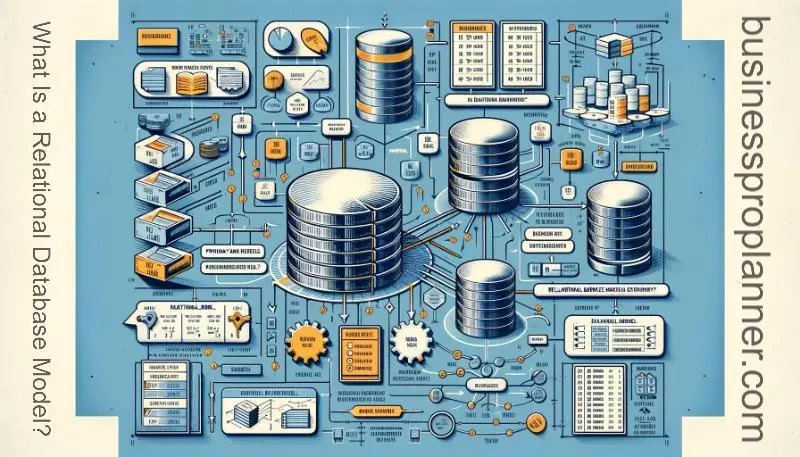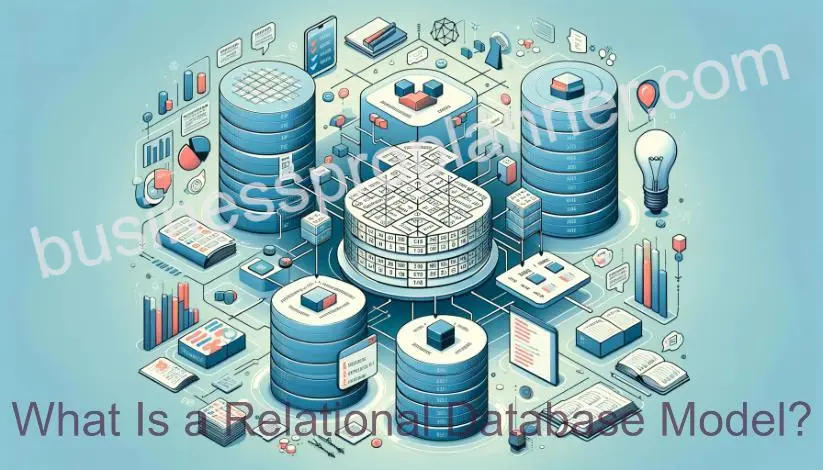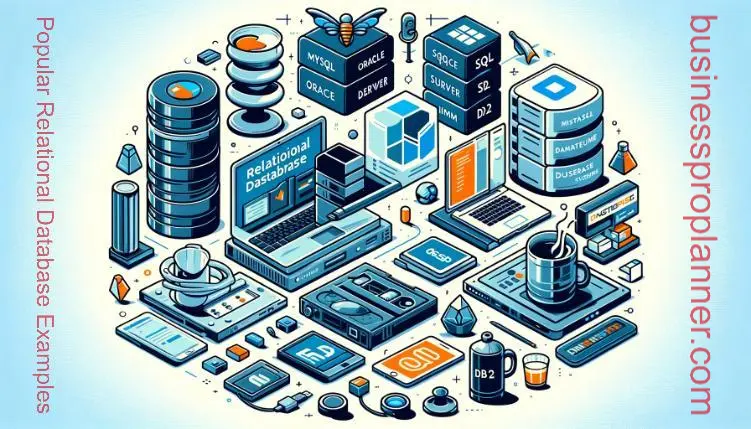Relational database model provide a flexible, scalable, and standardized way to manage and access data. This guide covers everything you need to know about relational databases.
Key Takeaways
- A relational database model uses a structured organized way to represent and access data through tables, rows, and columns.
- Data is stored in normalized tables that relate to each other through primary and foreign keys to represent relationships between data.
- Queries can be written using SQL to access and manipulate data across tables flexibly.
- Features like ACID properties ensure integrity and consistency even with concurrent access from multiple users.
- Relational databases have become the dominant paradigm for database management systems due to their flexibility, simplicity, integrity, and scalability.
- Examples of popular relational database management systems include MySQL, Oracle, Microsoft SQL Server, PostgreSQL, and IBM DB2.
What Is a Relational Database Model?
A relational database model is a type of database that stores and organizes data in one or more tables of rows and columns. The rows in a table represent individual entries or tuples, while columns define the attributes or properties of the tuples. By relating multiple tables through primary keys and foreign keys, the relational database represents complex relationships between entities and their attributes.

History and Origins of the Relational Model
The relational model was proposed in 1970 by Edgar F. “Ted” Codd at IBM while he was a researcher. It originated as an alternative to earlier hierarchical and network database models which were more difficult to design, operate, and maintain consistency as the complexity increased. Codd’s relational model provided a more straightforward way of structuring databases that is still used today in virtually all major database management systems (DBMS).
Components of a Relational Database Model
The relational model is based on first-order predicate logic and set theory. The main components of a relational model are:
- Relations (tables) – Represent entities through rows and columns
- Attributes – Columns that define properties of the row’s entity
- Tuples (rows) – Unique instances of the entity described by the table
- Keys – Attributes that uniquely identify each row
- Primary key – Attribute that uniquely identifies each row
- Foreign key – Links rows between tables based on a primary key
- Schema – Structure of the database defined by tables, columns, keys, etc.
- SQL – Structured Query Language used to manipulate and retrieve data
By normalizing data across multiple tables connected through primary and foreign keys. Relational databases can flexibly model complex relationships between different types of data.
How Relational Databases Work
Relational databases manage data by organizing it into tables of rows and columns where each row represents a single record of data or tuple. Data values are stored in attributes defined by the columns. Primary key attributes uniquely identify each tuple.

Tables can be related to each other by linking attributes together through foreign keys. Multiple tables can then represent complex entity relationships across various types of data. SQL is used to query, insert, update, and delete data from these tables using operators like selection, projection, join, and more.
Some key aspects of how relational databases function:
- ACID properties ensure data integrity even with concurrent changes.
- Indexes provide efficient access to rows matching criteria.
- Physical storage is independent of logical tables for easy migration.
- Multiple concurrent users can read/write data with transaction isolation.
- Systems like MySQL and SQL Server can scale to enormous datasets.
Overall, the relational model provides a conceptually simple yet powerful way to store and query structured and related data.
Benefits of Using Relational Databases
Some major advantages of relational databases include:
- Flexibility – Easily change or extend database schemas over time.
- Simplicity – SQL offers a simple yet powerful way to access related data.
- Integrity – Constraints and transactions maintain the accuracy of data.
- Scalability – Systems can handle immense amounts of operational data.
- Standardization – Common interface through SQL supported by all RDBMS.
- Organization – Normalization reduces duplicate data for efficient storage.
- Independence – Logical schema separate from physical storage and implementation.
- Flexibility – Easily store, relate, and retrieve diverse structured business data.
Because of these benefits, relational databases remain the most widely used technology for data management across industries.
Comparative Analysis: Relational vs. Non-Relational Databases
Relational and non-relational databases each have their advantages and use cases depending on the specific data and application requirements. This section provides a comparative analysis of their key characteristics.
| Criteria | Relational Databases | Non-Relational Databases |
|---|---|---|
| Data structure | Structured data organized into rows and columns through a predefined schema | Varied data structures including documents, graphs, wide columns, or other semi-structured formats with dynamic or optional schemas |
| Query languages | SQL is the standard interface for data manipulation and queries | Database-specific query languages may be used but are generally less expressive than SQL |
| Integrity rules | Transactions and constraints enforced through the ACID properties | Consistency rules may be optional according to database design |
| Scalability | Scaling requires careful database design and additional hardware | Easier horizontal scaling by distributing data across commodity hardware |
| Performance for large datasets | Slower than NoSQL databases for really large unstructured datasets | Require schema modification through DDL which takes the database offline |
| Schema changes | Require schema modification through DDL which takes database offline | Flexible to evolve schemas using dynamic properties without downtime |
Relational databases are prevalent in transactional systems, where predefined data structures and consistent queries are crucial. Non-relational databases are often more suitable for distributing vast datasets across commodity servers or handling semi-structured data, prioritizing flexibility over strict consistency.
As big data needs continue driving innovation, future database platforms are converging flexible data models with relational principles and SQL-like query power. This allows the optimal selection based on business and technical factors without sacrificing intrinsic capabilities.
Popular Relational Database Examples
Some of the most common relational database management system software in use today include:

- MySQL – Popular open-source RDBMS for web apps and small to medium databases.
- Oracle Database – Feature-rich RDBMS used by enterprises for mission-critical applications.
- Microsoft SQL Server – Full-featured proprietary RDBMS developed by Microsoft for Windows environments.
- PostgreSQL – Advanced open-source SQL database used similarly to MySQL.
- IBM DB2 – Commercial RDBMS originally developed by IBM for mainframe computers.
These relational database platforms have widespread adoption and continue to evolve new functionality while retaining standard SQL compatibility.
Advanced Concepts in Relational Databases
As relational database systems have matured, advanced techniques have emerged to handle increasingly complex data management scenarios:
- Advanced queries use subqueries, common table expressions, window functions, and more.
- Materialized views pre-compute expensive query results frequently accessed.
- Partitioning divides very large tables across multiple file groups or disks.
- Replication maintains real-time copies of data across database servers.
- Cloud database services like Amazon RDS provide scalable relational databases in the cloud.
- Document stores like PostgreSQL store JSON/BSON data along with relational data.
Database administrators also optimize performance through query tuning, indexing strategies, load balancing, high availability, and automated administration tools.
Conclusion
The relational data model, known for its structural flexibility and simplicity, has become the dominant database paradigm. Underpinning critical online transactional systems and extensive data warehouses. This model excels in managing shared data and data points with impeccable integrity and scalability. It adeptly handles relationships between the data, even across applications and database copies, using relational algebra principles.
Data attributes are stored in two or more tables, maintaining their value without affecting the physical data storage. Moreover, in today’s digital world, cloud-based relational databases have become increasingly significant. Offering a robust alternative to traditional database software and complementing object-oriented databases.
The underlying database structure of the relational model, ensuring standardization and adaptability, is essential for data-driven applications, seamlessly integrating with SQL and evolving to manage massive datasets.
